How To Catch Striped Bass From Shore
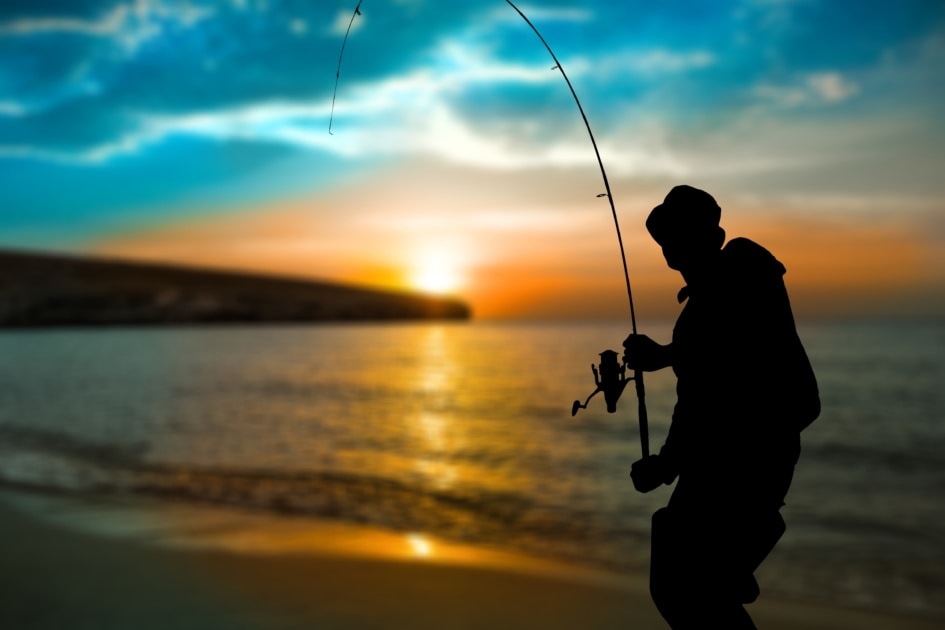
One of the best parts about catching striped bass is there is no need to have an expensive boat or spend hundreds of hours fishing to catch big ones. They are prized game fish that are accessible to everyone, known as “everyman’s fish.” With a few basic angling tools, some essential knowledge, and a little luck, you can get started catching “stripers” from shore today. They are fun to catch for the whole family.
Striped Bass Facts
Striped bass are a saltwater species that look similar to freshwater bass, but are not related. They are silvery fish with broad tails and large, round mouths that get big—upwards of 60-pounds. They are strong, thick bodied fish that will fight hard right up until you grab their lower lip. Even smaller striped bass (5 to 10-pounds) are a challenge to reel in.
Where To Catch Striped Bass
Stripers can be found in many different bodies of salt water—from very shallow, calm back waters to raging, pounding ocean beaches, from sandy beaches to boulder-studded shorelines, and so many places in between.
We recommend fishing for them in spots where tidal exchange creates a noticeable current. Stripers are attracted to currents because they have thick, muscular bodies that allow them to overwhelm prey in even the strongest waters.
Examples range from a small culvert (channel) to a large tidal river. If it empties into the ocean, it’s probably attracting stripers. Small breachways, inlets, and harbor openings are best bets for a beginner (and anglers of all levels).
Another common place to find stripers along the coast is at sand beaches (surf fishing). These can be boom-or-bust, but they are beautiful and easy places to fish. Look for deeper water, like troughs and bowls. Stripers will use this deeper water to ambush prey, and troughs are particularly productive if you are fishing bait (see bait fishing suggestions below). However, rip currents or breaks in sand bars are my favorite sandy-beach spots. The water moving in and out creates current and flushes out prey, and as a result is a striper magnet.
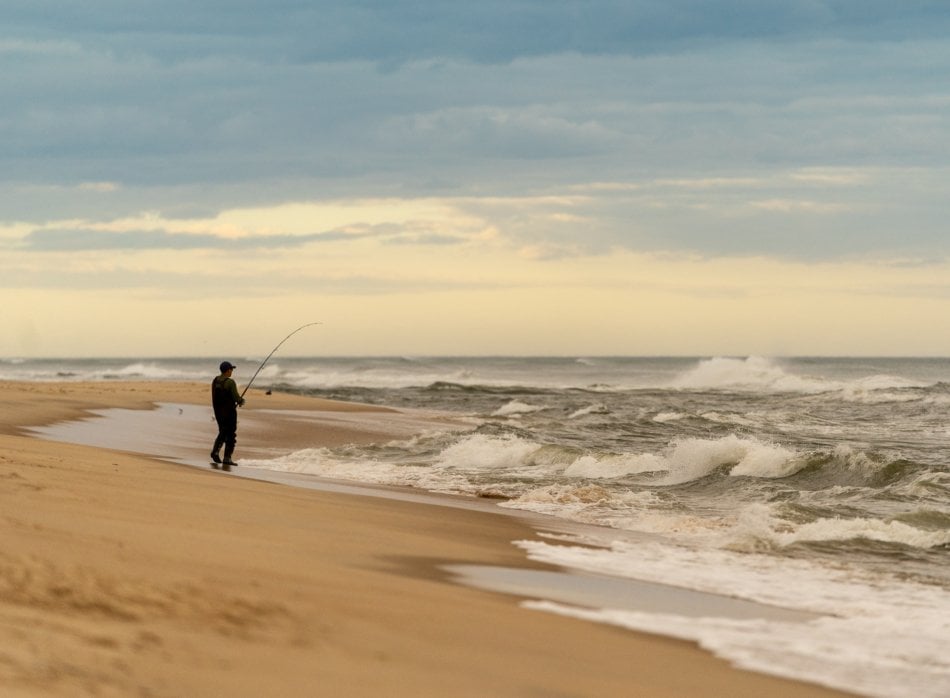
When To Catch Striped Bass
Stripers migrate up and down the east coast in the spring and fall, from Virginia to Maine. June is a great month for anywhere along the coast, but beyond that the timing is very region-specific, so it’s best to check with your local tackle shop.
Typically, anglers south of Delaware will find stripers mostly in the winter and spring months, while those in Northern New England will be limited to high-summer (late June through August). The rest of the states are somewhere in between, often with much longer seasons. No matter where you live, you’ll find stripers most actively feeding when water temperatures are between 50 and 70 degrees.
If you want the best shot at catching a striper, you should fish around dawn, dusk, or in full darkness. Stripers feed heavily during low-light periods, and your chances are much better after dark for larger fish, which can be more than 40 pounds. It can be a little hard to get used to but using a headlamp with a red light will help. Just don’t shine white light on the water, as this will frighten the fish away.
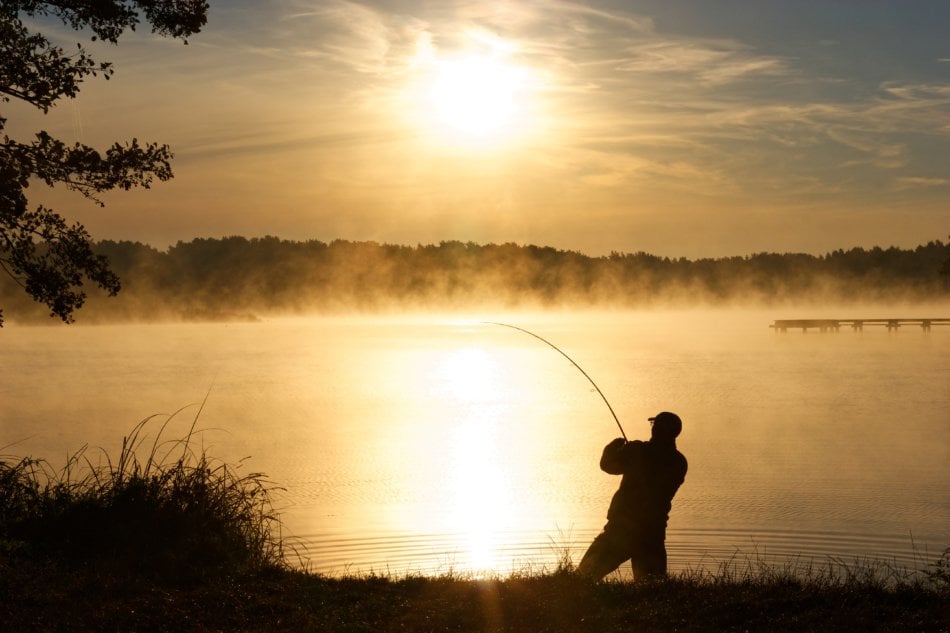
Fishing Tips According To Tides and Winds
In the spring and fall, fish the outgoing currents (outgoing tide). In the summer, it’s best to fish the incoming current (incoming tide). This is because stripers like cooler water. Casting bait or lures directly into current works great, but fishing around the edges of the current is even better. Depending on the spot, fishing with the wind in your face (or at your back) can be productive. Fishing with the wind in your face blows bait close to shore and brings the stripers to you.
Gear You’ll Need For Your Fishing Trip
Anglers targeting “schoolies” (fish under 30-inches) will need a rod in the 7 to 9-foot range rated to 2-ounces, a 3,000 to 5,000-sized reel, and 20 to 30-pound test. If you’re looking to target larger fish or throw chunk-baits or big lures, a rod in the 10 to 11-foot range rated 4 to 8-ounces, a 5,000- to 8,000-sized reel, and 40-pound braided line is what I’d recommend. You’ll also then need a leader, and 30 to 50-pound monofilament is best. You attach this to your running line with either a unit-to-unit knot, or a small swivel between the braid and monofilament. I then use a Tactical Anglers Power Clip to attach my lure to the leader.
You’ll also need a strong set of pliers for unhooking the fish, and something to hold your lures or bait. Most lure fisherman use a shoulder bag called a plug bag, but a backpack works just fine when you’re starting out. If you’re going to take my advice and fish at night, a headlamp with a red-light is essential. Waders make fishing the cooler water during striper season comfortable, but they aren’t essential.
The Best Bait For Striped Bass
You can catch striped bass on a huge variety of baits, lures, and even flies. Anglers end up choosing techniques they enjoy, making catching striped bass very personal.
Sand worms or menhaden chunks (also known as bunker or pogies) are bait that works all year long, up and down the coast. There are a variety of ways to rig these baits, so check with your local tackle shop to see what seems to be working best. Just remember that non-offset circle hooks are required by law for the entire coast with any bait. When fishing bait, hold the rod to feel for any subtle strikes. Don’t put the rod in a holder because that often means missing fish.
Striped Bass Fishing Lures
When it comes to lures, there are so many options it can feel overwhelming. Buy these three essentials:
1) First, get yourself a swimming plug, like a Diawa SP Minnow or Bomber A-salt. These catch fish day and night and will induce strikes from all sizes of fish. They are also easy to use. Just cast them out and reel them back at a moderate speed.
2) The second lure is a nine-inch Lunker City Slug-go. Rig these with the included hook, and simply cast them out and reel them back very slowly, adding in lots of twitches.
3) Finally, for the daytime fisherman, a small popper like the Creek Chub Atom is a must-buy. Toss it out, and make it pop and dance on the surface, and hold on tight. Stripers will attack these lures aggressively, especially around sunrise.
Good Luck
Follow these tips, put some time in casting in your local waters, and with a little patience you’ll be rewarded with a hard-hitting, hard-fighting striped bass this season. Good luck and have fun out on the water!
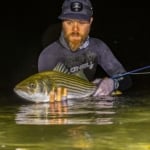
Jerry Audet
Jerry Audet is a writer, photographer, and lifelong outdoorsman currently residing in Massachusetts. He is well known in the angling world for his dedication to shore-based striped bass fishing and back-country trout and bass fishing. Jerry is the managing editor of Surfcasters Journal. He also writes for Anglers Journal, Field and Stream, and Strung.


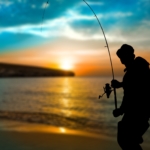
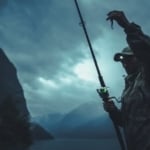
Thanks I enjoyed the article
Thanks Sean! Glad you found it useful!